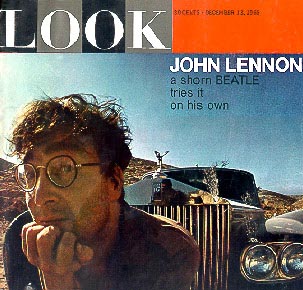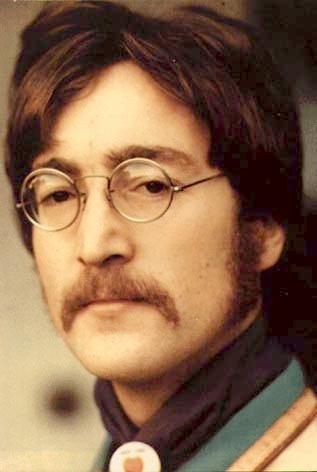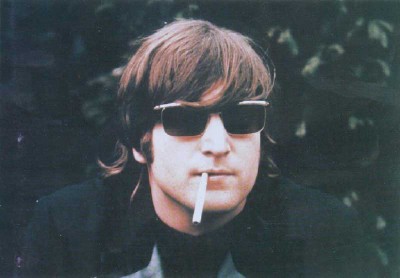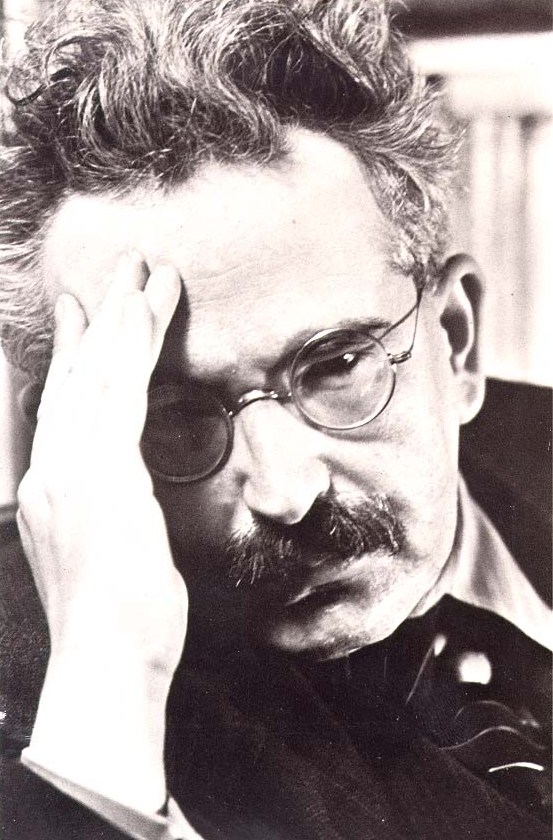He saw thinking as a form of intoxication. He recognized that drug-exploration, the pursuit of visionary experience, could be an extension of a rational and intellectual quest: “The dialectics of intoxication are indeed curious,” he wrote. “Is not perhaps all ecstasy in one world humiliating sobriety in that complementary to it?”

Meet The Beatles:Yet, despite his less than flattering remarks about institutional Christianity, and I think that is how the statements have to be read, later that year Lennon fell on his knees and implored “God, Jesus, or whoever the fuck you are”, to just once tell him what he was supposed to be doing
There, there’s a place where I can go,
When I feel low, when I feel blue,
And it’s my mind,
And there’s no time – when I’m alone.
I think of you, the things you do,
Go round my head, the things you said,
Like: “I love only you.”
In my mind there’s no sorrow.
Don’t you know that it’s so?
There’ll be no sad tomorrow.
Don’t you know that it’s so? ( Lennon, McCartney; There’s a Place)
Ambivalence is an emotion involving simultaneous attraction and repulsion. It is indifference and participation, desire and disconnect, the passive and the aggressive. The degree to which we are aware of our ambivalences, intellectual and emotional, is fertile terrain in the arts. One can be aware peripherally and vaguely or they can see something with full sight and weigh its impact in their life. One of the uses of art, in the wider sense, is that it can be a medium for registering those impressions just barely received and bringing them into focus front and center.

Walter Benjamin:The loss of rituals that compelled "ecstatic contact with the cosmos" posed a threat to humanity: "It is the dangerous error of modern men to regard this experience as unimportant and avoidable … it is not; its hour strikes again and again, and then neither nations nor generations can escape it." Humanity needed such periodic rites of regeneration – to avoid hypnotic episodes of feverish destruction, which served the same purpose at a much greater cost.
There are few other popular musicians gifted with John Lennon’s perceptions into ambivalence and the major part it plays in our emotional make-up. His early Beatle composition ‘There’s A Place” express succinctly this emotion covering its central terrain. While superficially a form of love ballad, the main focus is not Lennon’s lady love, but his thought processes, and secondly, his ambiguous relationship with the Christianity he knew.
That relationship, at times was tenuous, protracted, and conflictual; Lennon being accused of blaspheming the name of Jesus quite often. In his book, A Spaniard in the Works,Lennon portrays Jesus Christ as, “Jesus El Pifico, a garlic-eating, stinking little yellow, greasy fascist bastard catholic Spaniard.” Lyrics from Lennon’s “Serve Yourself”…

If Lennon is compulsive about anything today, it's about truth as he sees it. But he protests when he's labeled a cynic. "I'm not a cynic. They're getting my character out of some of things I write or say. They can't do that. I hate tags. I'm slightly cynical, but I'm not a cynic. One can be wry one day and cynical the next and ironic the next. I'm a cynic about most things that are taken for granted. I'm cynical about society, politics, newspapers, government. But I'm not cynical about life, love, goodness, death. That's why I really don't want to be labeled a cynic."
You say you found Jesus Christ
He’s the only one
You say you found Buddha
Sitting in the sun
You say you found Mohammed
Facing to the east
You say you found Krishna
Dancing in the seats
Ain’t nobody gonna do it for you
Well you may believe in devils
and you may believe in lords
But Christ, you’re gonna have to serve yourself and that’s all there is to it.
…You got to serve yourself
Ain’t nobody gonna do it for you?
You gotta serve yourself
Nobody’s gonna do for you.
The real interest, the true subject matter of “There’s a Place” is the mind. Even when Lennon comes, in the second verse, to the issue of the woman, he places the emphasis on what happens in his mind. What she says goes around his head. His address to her takes the form of a question: don’t you know? Beneath the rhetorical form, Lennon was asserting that he is immune from sadness and that he has found the key to freedom from time. This point is emphasized: there will be no sad tomorrow, he asserts, just as he’s told us that when he is alone there is no time. It seems surprising today that it was recorded in February 1963, when Lennon was only twenty-two, showing how a prodigy could create music unlike anything like it in rock and roll. On their first LP, Lennon was expressing this ambivalence between the need and desire for both relationships and solitariness, for engagement with the world and not only withdrawal but even transcendence of the world; which proved t
beyond the hysterics of Beatlemania lay something substantial to justify the phenomenon.
Look Magazine 1966:He does not feel that one need accept the divinity of Jesus-- he, personally, does not-- in order to profit from his words. A frequent reader of ancient history as well as philosophy (his current lists includes a book on Indian thought and Nikos Kazantzakis's 'Report Greco'), he contends that man has mishandled Christ's words throughout the centuries. "I believe Jesus was right, Buddha was right, and all of those people like that are right. They're all saying the same thing-- and I believe it. I believe what Jesus actually said-- the basic things he laid down about love and goodness-- and not what people say he said."
Writing in the 1920s and ‘30s, Benjamin smoked hash, tried mescaline, and enjoyed his own trips: “I thought with intense pride of sitting here in Marseilles in a hashish trance; of who else might be sharing my intoxication this evening, how few.” Thinking under the influence of hashish was like unrolling a ball of thread through a maze: “We go forward; but in so doing we not only discover the twists and turns of the cave, but also enjoy the pleasure of this discovery against the background of the other, rhythmical bliss of unwinding the thread.”
In “There’s a Place” Lennon admits a discouragement, a haunting melancholia, and is clearly perplexed by problems of the heart. Interestingly, Lennon does not conventionally prescribe a cure for the blues involving doses of more love, better love, or his girlfriend. On the contrary, the woman would appear to be the source of ambivalence, or at least a major part of the problem; women being a sublimated expression for Christianity, or at least its subconscious manifestation for the Christian gospels and feminine counterpoint to the imposed patriarchal tradition imposed as a template onto Christianity. Lennon’s solution is inside him, and he preaches the answer: “Don’t you know that it’s so?”

Look Magazine 1966:Christianity has suffered, he believes, not only because Christians have distorted Christ's words but because they concern themselves with structures and numbers and fail to listen to their vows. They 'mutter' and 'hum' their prayers, but pay no attention to the words. "They don't seem to be able to be concerned without having all the scene about, with statues and buildings and things."
What the bare lyrics do not represent is the weight, accented by the music, given to the significant words “mind” and “time”. Several years before, Lennon apparently surreptitiously introduced to LSD and psychotropic drugs, leading him to assert that in his mind there was a different world, a world in which time itself and the emotions he lived in time, were powerless. It was a place where time was sanctified and invisible. Even the opening word “there” is repeated. When you hear it, you notice that the first “there” is strung over five notes, as if tentatively producing something private, a tentativeness reinforced by the forceful repetition of the word in the phrase “there’s a place”. It is an intimate disclosure, but once over the initial hesitation, there is no remorse or looking back; no letting the past catch the wind.
…On hashish, he saw the elaborate furnishings of the 19th-century bourgeois interior concentrating “to satanic contentment, satanic knowing, satanic calm … To live in these interiors was to have woven a dense fabric about oneself, to have secluded oneself within a spider’s web, in whose toils world events hang loosely suspended like so many insect bodies sucked dry. From the cavern, one does not like to stir.” The narcotic trance revealed an occult and sinister undercurrent to the bourgeois love of comfort and exotic décor….

Look Magazine 1966:"If Jesus being more popular means... more control, I don't want that. I'd sooner they'd all follow us even if it's just to dance and sing for the rest of their lives. If they took more interest in what Jesus-- or any of them-- said, if they did that, we'd all be there with them." Would he call himself a religious person? "I wouldn't really. I am in the respect that I believe in goodness and all those things." And if being religious meant being 'concerned,' as Paul Tillich the late Protestant theologian, once put it? "Well, I am then. I'm concerned alright. I'm concerned with people."
In Lennon’s composition “Girl” from “Rubber Soul”, he addresses, interestingly, not the woman, but the listener. The appropriation of the gypsy or “gitanes” musical motif keys the song into a murky past of mysticism and folklore; the tradition of the wandering balladeer. Also, the frequent, direct, and sparse use of the word “girl”, is again reminiscent of his “Spaniard” at work in the medieval realm of the lost “Cantos”. The anonymity of the girl is disconcerting. As the song progresses, the “girl” becomes increasingly a metaphor of femininity. She is every woman, and indeed, from one perspective, every person, because the situation Lennon describes seems universal. In fact, in “Girl” there is an even an element of menace, and of fear of the force. Like “There’s a Room” a, “Girl” is ostensibly a love song, but the chief interest is not Lennon’s lady love, but his mind, and his relationship with Christianity.

Look Magazine 1966:"It just so happens that some groups playing in England are making people talk about England, but nothing else is going on. Pop music gets through to all people all over the world, that's the main thing. In that respect, youth might be together a bit. The Commie youth might be the same as us, and we all know that, basically, they probably are. This kind of music and all the scene is helping. But there's more talk about it than is actually happening. You know, swinging this, and all that. Everybody can go around in England with long hair a bit, and boys can wear flowered trousers and flowered shirts and things like that, but there's still the same old nonsense going on. It's just that we're all dressed up a bit different."
Is there anybody gonna listen to my story,
All about the girl who came to stay?
She’s the kind of girl you want so bad
It makes you sorry,
Still you don’t regret a single day.
Ah, girl. Girl.
Was she told when she was young
That pain would lead to pleasure?
Did she understand it when they said
That a man must break his back
To earn his day of leisure?
Will she still believe it when he’s dead?
Ah, girl. Girl.
There is something almost fated about Lennon’s relationship with her: he says that he doesn’t regret a single day despite all the pain. There is ambivalence, but once more, there is also transcendence. An ability to rise above both the attraction and the repulsion by virtue of his insight into the condition. But there is more,an unsaid sequel that suggests itself in the last verse.
Ultimately, are the questions Lennon poses about a man breaking his back to earn his day of leisure, and the girl’s attitude after the man’s death related to religion? Lennon told interviewers, in Lennon Remembers, that “Girl” was about Christianity. More precisely, it would have been about his relationship with Christianity. Not surprisingly, Lennon held a distance to church participation, but he was clearly a keen and interested observer of Christianity. In this respect he recalls Voltaire, though Lennon did not live long enough to reconcile himself with Christianity as Voltaire did. When the furor erupted in the USA in 1966 over his comment that the Beatles were more popular than Christianity and that Christianity would wither and die, he did demonstrate that he had been reading in the area, but what exactly has never been determined. Certain lines of his thinking do seem drawn from the Frankfurt school, particularly Walter Benjamin and Adorno; perhaps that is the source of the rumor of Adorno’s relation with the group. The relevence of Chrsitianity being that of a market based phenomenon and the odd dynamic presenting itself between Judaism/leftist politics/Christianity and the concept of utopia.
…For the society as well as the individual, Benjamin realized “the importance of intoxication for perception, of fiction for thinking.” The new consumer culture of the 19th Century induced a wide-spread trance in the public, as capitalism breathed supernatural power into its products. The World Exhibits, the Belle Epoque’s celebrations of global commerce, “open up a phantasmagoria that people enter to be amused. The entertainment industry facilitates this by elevating people to the status of commodities. They submit to being manipulated while enjoying their alienation from themselves and others.” The euphoria induced by these spectacles was like a drug that robbed the masses of their will, that taught them how to enjoy being transformed into objects of exchange. Intoxicated, entranced, by the new world of commodities, the West lost its contact with the communal “ecstatic trance,” those archaic Dionysian festivals and annual Mysteries celebrating the transformation of primordial chaos into order….
In “Girl” Lennon pinpointed universal themes. The girl, as an avatar for ego, is imbued with herself, her vanity, is self-satisfied, partakes in promises she has no intention of keeping, and she accepts or perhaps, sadistically is not disturbed or concerned by the suffering which men endure, a suffering she does not understand nor appear interested. It is a short leap to see how these could be applied to individual Christians and even to the institutional Churches; At the elemental level, antipathy is an immediate visceral response.
It is difficult to argue against Lennon’s dislike of what he saw, but that misses the point. Lennon articulates a reaction to Christianity, and its manifestation in everyday life, the objective reality of the damage it can create.And Lennon’s reaction is not superficial: there is some insight there. Further, it is not preachy. The piece is ostensibly a “love song”, and most people enjoy it on that level, even if there is a nagging sense of something more intense and substantial, even darker, beneath the surface.
…For Benjamin, this was the real significance of the First World War, “an attempt at a new and unprecedented commingling with the cosmic powers.” He worried that mankind’s alienation from itself was deepening “to such a degree that it can experience its own destruction as an aesthetic pleasure of the first order.”…
Lennon had a unique gift for capturing ambivalence. In “There’s a Place” and “Girl” there is a secondary level. a parallel narrative that expresses ambivalence beyond a commercial love product. Evidently, He has no final answer to riddle and mystery of sphinx-woman, and the retreat to his mind is only a pacification, a resting place ,a safe-house of the mind and not a proposal of solutions. But he had the intelligence and courage to pose the questions, which indicates something fundamentally honest from which to build on.
ADDENDUM:
“Just as the individual slips between sleep and waking, reaching different intensities of awareness during the day, generations and epochs also fluctuate between levels of consciousness and unconsciousness. Advertisements, popular entertainment, public architecture are natural expressions of the unconscious desires of the “dreaming collective.” Unseduced by the ideology of modernist progress, he described Capitalism as “a natural phenomenon with which a new dream-filled sleep came over Europe, and, through it, a reactivation of mythic forces.” Those reactivated mythic forces ended up destroying him: He committed suicide in 1939, while trying to flee the Nazis.
He died before he could begin a projected book on drugs. It would have perfectly fit his intention: “To cultivate fields where, until now, only madness has reigned.” Paradoxically, Benjamin’s work suggests that only intoxication – ecstasy that is also “humiliating sobriety,” an apt description of tripping – can awaken the individual by snapping them out of the monotonous trance of modern life.”








 COMMENTS
COMMENTS
David,
Thank You for writing!!! This was a great story!! I’m glad I got to read it…Please, whatever else you may do, keep writing!!!
Great site with some fantastic picks – loved the one of Claudette Orbison feeding John. Thank you for the trip. Peace and Love, Julia
thanks so much. keep up the good work on your site as well.
thanks. “nowhere” came off pretty good. Its hard to predict and to craft so to speak, but this one had some schmaltz and some sizzle. The next one on Lennon is going to be less jazzy, maybe a bit more profound. best.